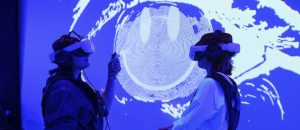
immersivevrexhibit.jpg
Taking place as part of Frequencies, a series of events and exhibitions at London’s Barbican Centre exploring “the sounds that shape us”, In Pursuit of Repetitive Beats is an immersive VR experience that transports listeners back to 1989, into the heart of acid house and UK rave culture at its prime. Here, after trying the experience herself and visiting the adjoining Feel The Sound exhibition, Diane Smyth speaks to creator Darren Emerson about the genesis and development of his “living documentary”
An immersive virtual reality experience, In Pursuit of Repetitive Beats, has opened at London’s Barbican Centre.
Taking place from 22nd May until 3rd August, it invites visitors to “travel back in time to the heart of the acid house scene” where groups of four “can share the same virtual space and interact together as rave culture pioneers”.
It’s the work of Darren Emerson and East City Films, who first premiered the experience in Coventry back in 2022. The latest iteration – which is described as “the UK’s biggest VR experience” – is part of Frequencies, a series of events and exhibitions taking place at the Barbican this summer exploring “the sounds that shape us”. Also included in the series are the Feel The Sound exhibition, an all-dayer hosted by Warp Records, a Jeff Mills performance with the London Symphony Orchestra, and a month-long programme celebrating London pirate radio stations, titled Rebel Radio.
“I find music documentaries about acid house a bit boring,” Emerson told DJ Mag. “They nearly always have a similar format, people being talking heads with an out-of-focus background in a recording studio, saying what they did, ‘and this happened and that happened and it was amazing!’ My underlying feeling watching this is frustration, because I want to be there. I don’t want to hear about it, I want to actually do it.”
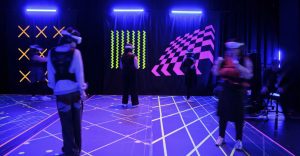
immersivevr.jpg © Thomas Adank / Barbican Centre
In Pursuit of Repetitive Beats is described as a “living documentary”. Set in 1989, it journeys from a suburban bedroom to a rave and beyond, with users donning VR headsets, headphones, haptic vests, and controllers to see, hear, interact with, and, to some extent, feel the virtual environment.
Free-roaming in a 4m x 6m space, users can put a record on, pick up mix tapes and flyers, and eventually enter a dancefloor; some of the sounds are positional, emulating a phone ringing from a particular direction, for example, and there’s a fan to help simulate the sensation of driving. There’s also a banging soundtrack, mostly featuring music from that time such as Orbital’s classic ‘Chime’ and deeper cuts like RHYTHMATIC’s ‘Demons’.
The earliest version of In Pursuit of Repetitive Beats in 2022 was supported by Coventry City of Culture of Trust, and is set in the West Midlands partly because of this background, but also because acid house beyond London, Manchester and Blackburn has often gone under the radar. It features talking heads from key figures in 1980s Coventry and Birmingham, including Amnesia House promoters and members of the West Midlands Police Acid House Squad. Moving into life from posters and flyers in the environment, they give personal accounts of what happened, and insights into socio-political factors such as how rave helped overcome local rivalries and football violence.
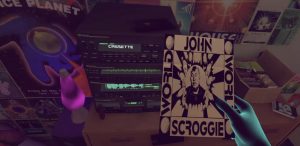
acidhouse.jpg. In Pursuit of Repetitive Beats Courtesy of East City Films
Emerson, who is not to be confused with the former Underworld member of the same name, is quick to point out that the experience is also universal. “The night itself is the same night,” he told DJ Mag, but In Pursuit of Repetitive Beats also includes dreamlike – or maybe hallucinatory – sections which transcend time and place.
Users walk along record grooves and radio displays, and follow cars as they drive over neon grids in visuals inspired by original rave posters and flyers, a small display of which are on show at the Barbican. Like the VR itself, they point to a desire to use new technology to create new ways of being. “People would go to libraries and photograph or colour-photocopy fantasy and science fiction books; there’s a Dreamscape flyer with a green grid that’s literally from a school science textbook,” said Emerson.
“These great flyers promise a sort of New Age transcendence, which is an important thing I felt when I was doing it – that I was finding something spiritually inside myself through dancing and through connection [with others]. The way the promoters would articulate that through the flyers is important to the culture, though it sometimes feels like a juxtaposition, using cutting-edge technology to create something that is humanistic, about everyone coming together.”
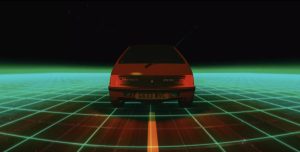
acidhouse.jpg
This sense of connection perhaps helps explain why In Pursuit of Repetitive Beats has become such a success; installed in Birmingham, Brighton and Belfast in its first tour, as well as internationally afterwards and on the film festival circuit, it has already far exceeded projected visitor numbers. After London, it will go on to Leeds, Warwick, and Cardiff. Some visitors are older and nostalgic about acid house, said Emerson, while others are younger and keen to experience something of a scene that’s still so influential today.
In Pursuit of Repetitive Beats includes contemporary music as well as rave classics, with tracks such as Max Cooper’s ‘Aleph 2’ there to give what Emerson describes as a more cinematic experience, helping evoke certain feelings, “and because I’m a fan”.
Cooper’s music is also included in the Feel the Sound exhibition, a large group show including artists whose work suggests alternative ways to experience sound, many of which are interactive and extend beyond listening alone.
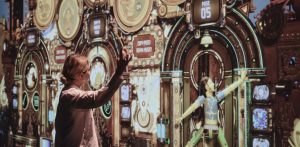
acidhouse.jpg Resonance Continuum (2025), Elsewhere in India | © Thomas Adank
There’s an installation by Jan St Werner, Vibraceptional Plate, for example, in which users can have a haptic experience of low-frequency patterns, and a game by Elsewhere in India, in which visitors can remix music by copying set poses [pictured above]. As co-creator Murthovic explained, Resonance Continuum is designed to re-stimulate interest in traditional Indian instruments, which are being abandoned by youngsters because they take so long to learn.
Feel the Sound also includes numerous alternative or prototype musical instruments, including a Chowndolo by Intelligent Instruments Lab, based on a magnetic pendulum, and Near and Remote Memory Activation Practices by Alejandra Cardenas and Tatiana Heuman, inspired by whistling bottles.
The TRANS VOICES vocal collective have also teamed up with the spatial sound art studio MONOM, ILĀ and Patty Ayukawa on a project for the exhibition. Titled UN/BOUND, it is described as “a holographic choral exploration, which invites visitors to add their voice to the ever-evolving chorus.”
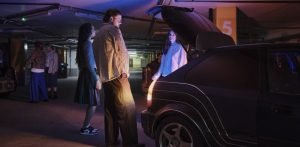
joyride.jpg. Joyride (2025), Temporary Pleasure | © Thomas Adank
Cooper’s work is installed in Barbican’s underground car park – the first time this space has been reclaimed for exhibitions – and is titled Reflections of Being. Three years ago he asked his audience, “What do you want to express that you feel you can’t in everyday life?”, and his music draws on their replies; the installation also uses projections and transparent screens to show film and words leaking out over each other and into the surrounding space.
The car park includes an installation titled Joyride by Temporary Pleasure too, a new commission that capitalises on the space by featuring four hot rods with their boots up. Lights flashing, music pumping, and neon glowing, this intervention is another invitation to visitors to get involved.
In Pursuit of Repetitive Beats and Feel The Sound are part of Frequencies, and will be on show at the Barbican Centre, London until 3rd and 31st August respectively. Find out more and get tickets here.
In Pursuit of Repetitive Beats moves to Leeds Testbed from 15th August to 17th September, Warwick Arts Centre from 29th September to 13th October, and Wales Millennium Centre Cardiff from 24th October to 22nd November.
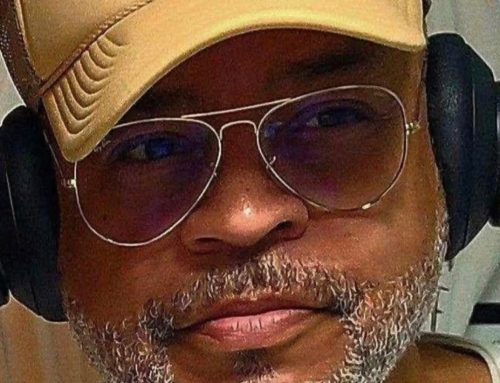

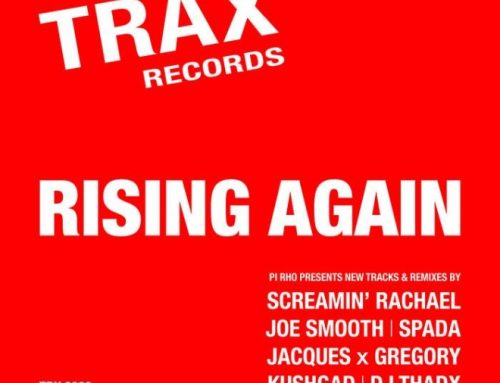
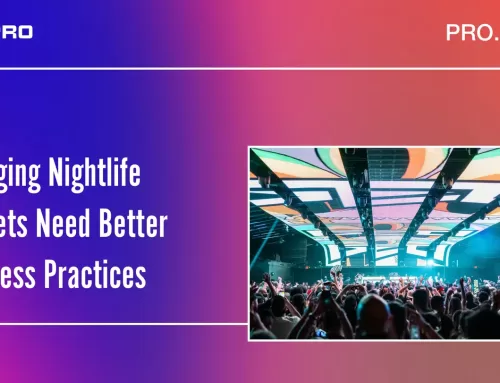
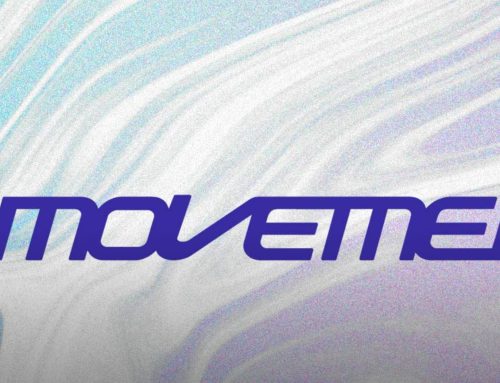
Leave A Comment
You must be logged in to post a comment.